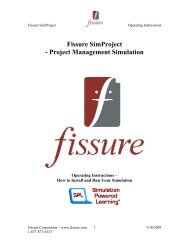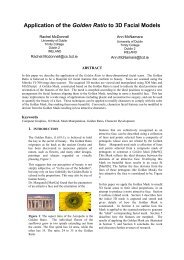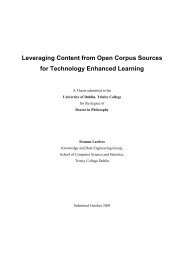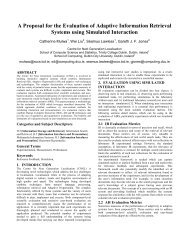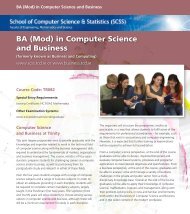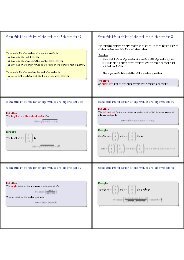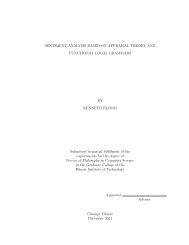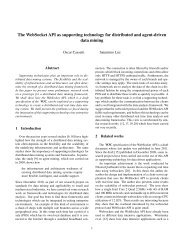Situations from events to proofs 1 Introduction
Situations from events to proofs 1 Introduction
Situations from events to proofs 1 Introduction
You also want an ePaper? Increase the reach of your titles
YUMPU automatically turns print PDFs into web optimized ePapers that Google loves.
We can then relativize (1) <strong>to</strong> a circumstance of evaluation c, formulated as a<br />
string, by agreeing that<br />
S occurs in c<br />
def<br />
⇐⇒ (∃e ∈ E(S)) e occurs in c . (3)<br />
It follows <strong>from</strong> (2) and (3) that<br />
Ŝ also occurs in<br />
this time because<br />
Ŝ occurs in ϕ, ψ ϕ, χ now, ϕ, ψ ϕ, ψ ϕ, χ .<br />
c 1 = ϕ, ψ now, ϕ, ψ ψ, χ ϕ, χ ϕ, ψ ϕ, ψ<br />
ϕ now, ψ χ and ϕ now, ψ ψ χ both occur in c 1 .<br />
We define the c-extension of S, ext(S, c), <strong>to</strong> be the set of strings in E(S) that<br />
occur in c<br />
ext(S, c)<br />
def<br />
= {s ∈ E(S) | s occurs in c}<br />
so that<br />
S occurs in c iff ext(S, c) ≠ ∅ .<br />
As ext(S, c) need not be a single<strong>to</strong>n {s}, we ought perhaps not speak of reference,<br />
leaving that <strong>to</strong> what Austin calls demonstrative conventions. If reference<br />
is not fixed in (3), then (3) must, of course, fall short of Barwise and Perry’s<br />
reading of Austinian truth (quoted by Cooper). On the other hand, the intension/type<br />
E(Ŝ) described by Ŝ above is in harmony with Kripke semantics<br />
for Ŝ, formulated in terms of truth at worlds, insofar as every world w is fully<br />
determined by a set E w of <strong>events</strong>, and<br />
Ŝ is true at w iff E(Ŝ) ∩ E w ≠ ∅ .<br />
In place of the Carnap-Montague picture (CM) of intension as a function <strong>from</strong><br />
possible worlds <strong>to</strong> extensions, the intension of S is identified with the set E(S)<br />
of possible values (extensions) of S, some subset of which get realized in a<br />
circumstance of evaluation.<br />
The strings we build below are, in general, designed <strong>to</strong> ground the higher<br />
types of proof-theoretic semantics in finite observations over time ([Fer04]).<br />
But are we not, by working with strings, smuggling an assumption of discrete<br />
time that for all we know, is unfounded? In section 2, we link discreteness <strong>to</strong><br />
the assumption that our observations are finite, and construct arbitrary event<br />
structures such as the real line <strong>from</strong> inverse limits of strings. Whereas <strong>events</strong> for<br />
Davidson are particulars, our strings are representations that can be embedded<br />
in incompatible circumstances of evaluation. In section 3, we study explicit and<br />
contextual entailments, treating strings as both extensions and circumstances of<br />
evaluation. These two roles of strings are related in section 4 <strong>to</strong> proof-theoretic<br />
semantics.<br />
5



